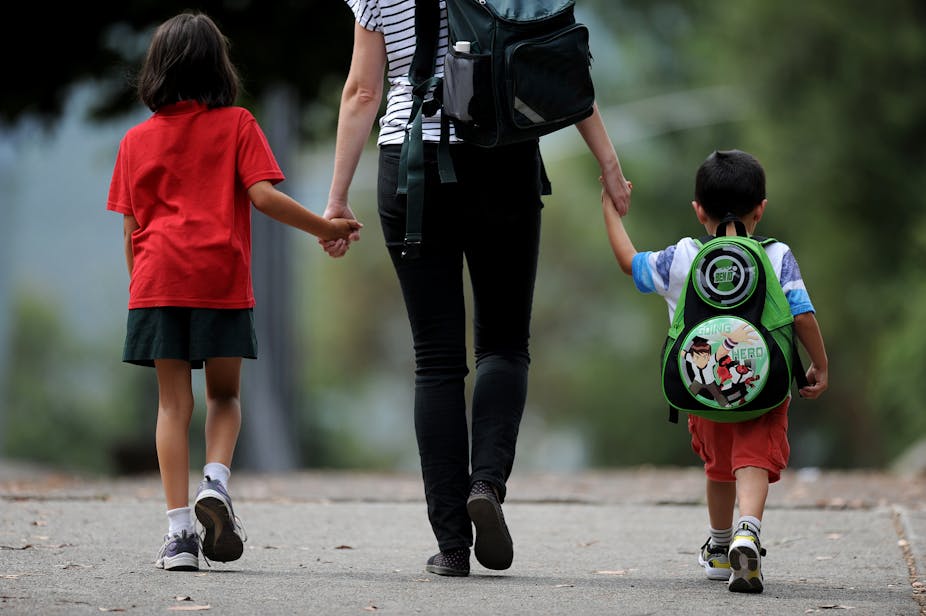The Victorian government has announced a $747 million “funding boost” to allow schools to better meet the needs of disadvantaged students.
The announcement earlier this week forms part of the “Education State” reforms aimed at “breaking the link” between socio-economic disadvantage and student achievement.
The big story is how future funding will be allocated: for the first time in Australia’s history, parent education levels and NAPLAN results will be taken into account when calculating funding levels.
Parent education levels and school funding
Linking parent education levels to school funding will be a bold experiment.
While the current Victorian model takes into account family and community characteristics, including parental occupation levels, it is new territory to factor in the education attainment levels of parents.
In many ways, this is a wise move, which could provide a more nuanced portrait of educational disadvantage to inform funding decisions.
A large body of research in multiple countries (over multiple decades) supports this move. The research shows a parent’s education level has a strong impact on their child’s success in school.
The problem for the government, however, will be how to determine the measure for linking parent education levels to funding. In other words, what will the formula be for linking education levels to cash?
The government also faces the practical challenge of how to gather information required from each school to determine the education levels of each student’s parents. This will be a very complex undertaking.
NAPLAN and school funding
The government has also said it will link a portion of school funding to student’s NAPLAN scores. This is a much more contentious move, which is likely to start a storm of debate in the education community.
This week’s report states, for example, that:
Government secondary schools will be provided with an extra $2000 for each student who did not meet minimum NAPLAN standards when they were in Year 5.
The government suggests this is:
a world-leading initiative that takes Victoria a step beyond traditional needs-based funding approaches.
The government is clever to stress that money will be delivered to secondary schools, even though funding will be based on Year 5 results in primary schools.
This is a deft move to avoid criticism that primary schools might “game the system” by purposely seeking to under-perform to attract funding.
Despite this, linking NAPLAN to funding still has some significant limitations, which the government should carefully assess before proceeding.

By focusing solely on achievement in literacy and numeracy, NAPLAN provides an arguably narrow vision of what constitutes educational excellence and achievement.
With these limits in mind, however, it is arguably reasonable to integrate NAPLAN as one aspect of a broader suite of measurements for understanding disadvantage and targeting funding.
A post-Gonski funding landscape?
Regardless of what the future Victorian funding model looks like, it is clear the nationally consistent approach to school funding set out in the 2011 Gonski Report is looking highly uncertain.
The Victorian government has suggested, for example, it “will acquit” its “obligations under the Gonski agreement for the 2015, 2016 and 2017 school years”, but then pursue its own agenda based on the outcome of a school funding review being undertaken by former Victorian premier Steve Bracks.
This is understandable, given the federal Coalition has refused to fund Gonski reforms beyond 2017. Bill Shorten has also declined to commit to the Gonski model if federal Labor is re-elected.
It is difficult to criticise the Victorian government, therefore, for seeking clarity over its model in the context of a national funding landscape that so clearly lacks federal commitment.
Nevertheless, we should expect a fresh round of debate to brew over the coming years about whether or not Gonski is done and dusted, or whether the federal government will come back to the negotiating table with a serious commitment to needs-based funding.
A volatile and contested space
The bigger question about whether or not Victoria can achieve a funding system that is better or fairer than either Gonski or its current model remains to be seen.
Politics, of course, often gets in the way of good policy. For example, despite its commitment to needs-based funding, the Victorian government remains under the shadow of its controversial “25% legislation”. This ensures the independent and Catholic sectors will receive a minimum of 25% of the funding amount that the state provides to government schools. This is a deal that is fundamentally opposed to the principles of needs-based and sector-blind funding.
School funding is (and has always been) a volatile and highly politicised domain of education policy. As such, the outcome of the forthcoming Bracks Review promises to be an intriguing development and fundamental to the future of funding and equity in Victorian schools.

